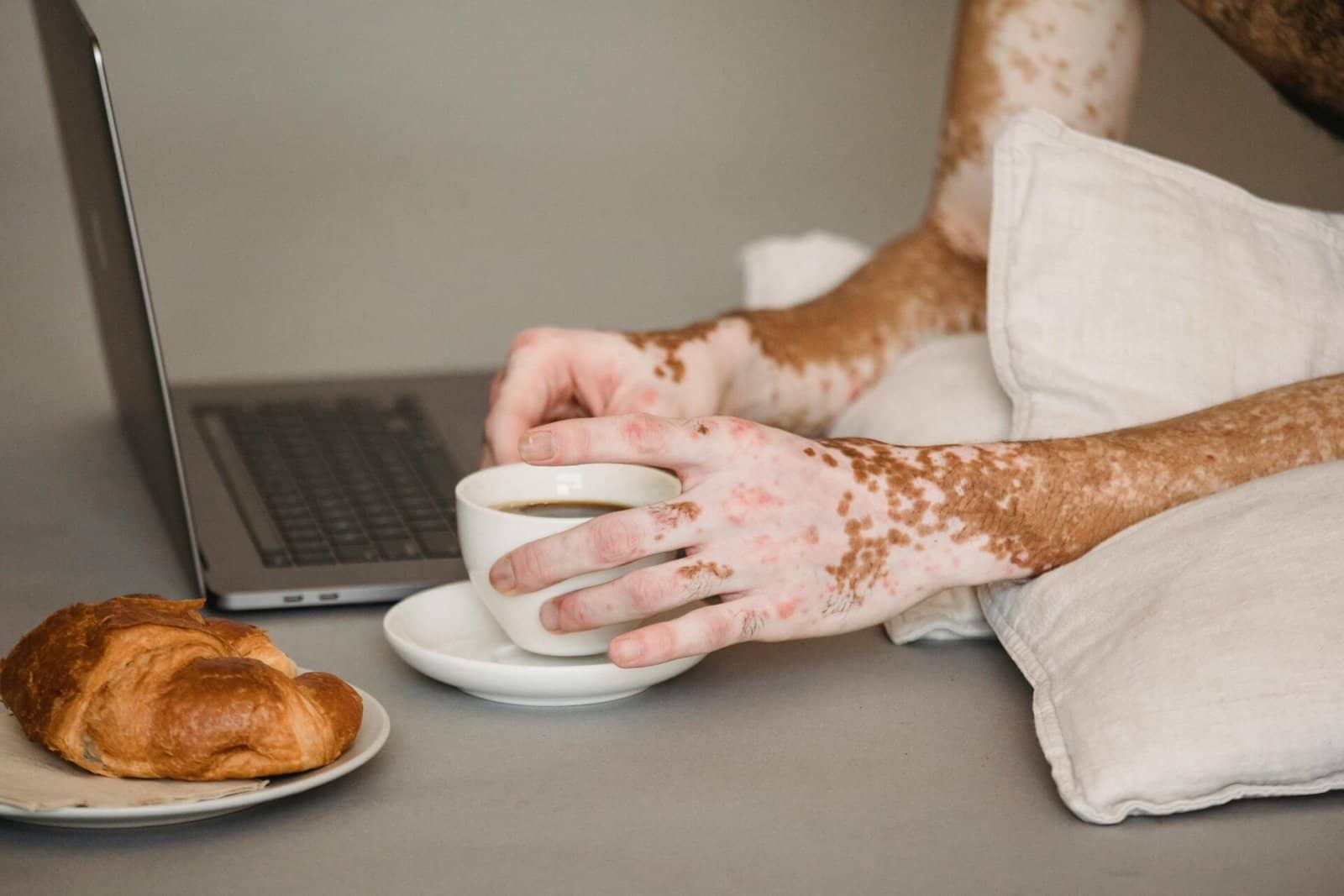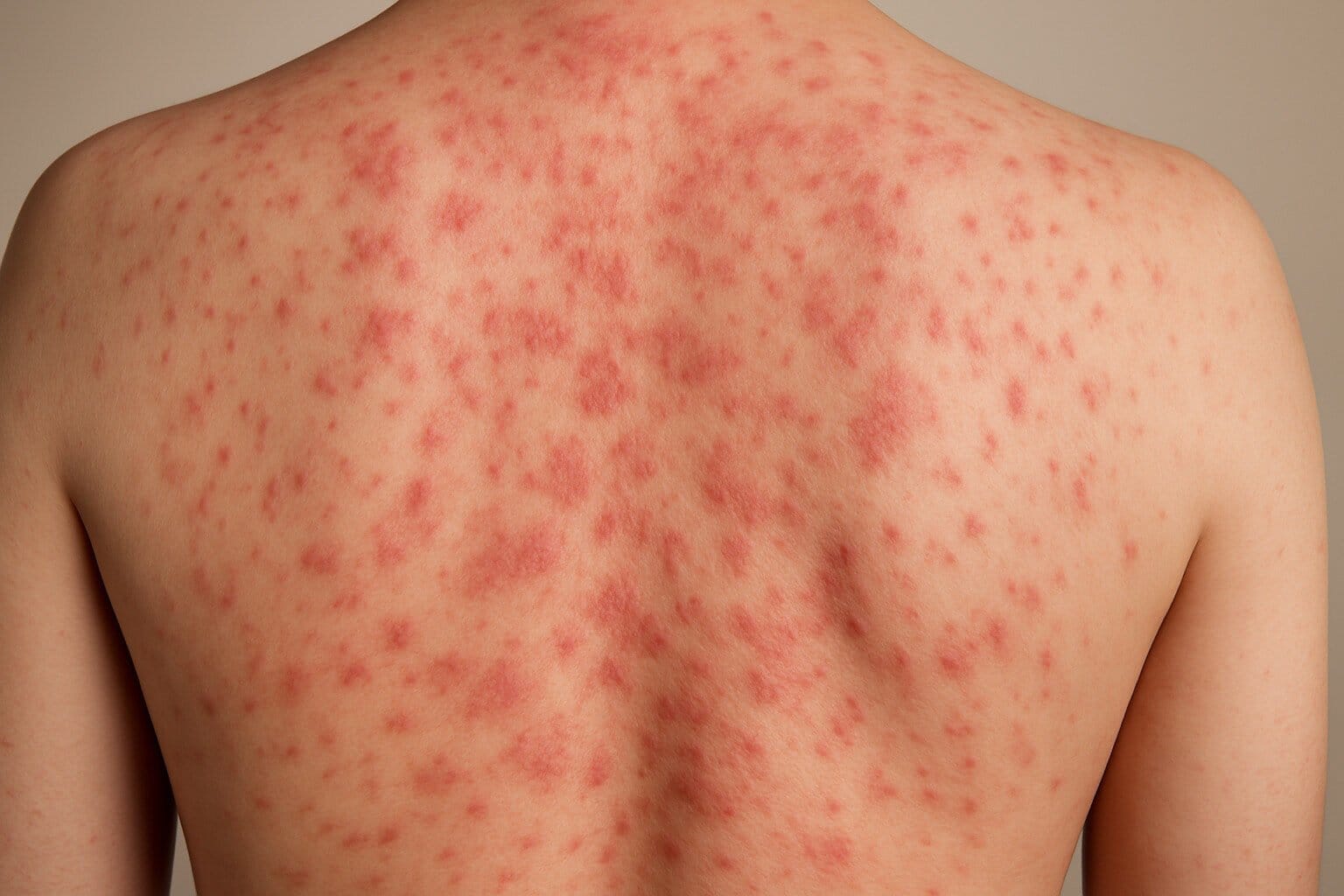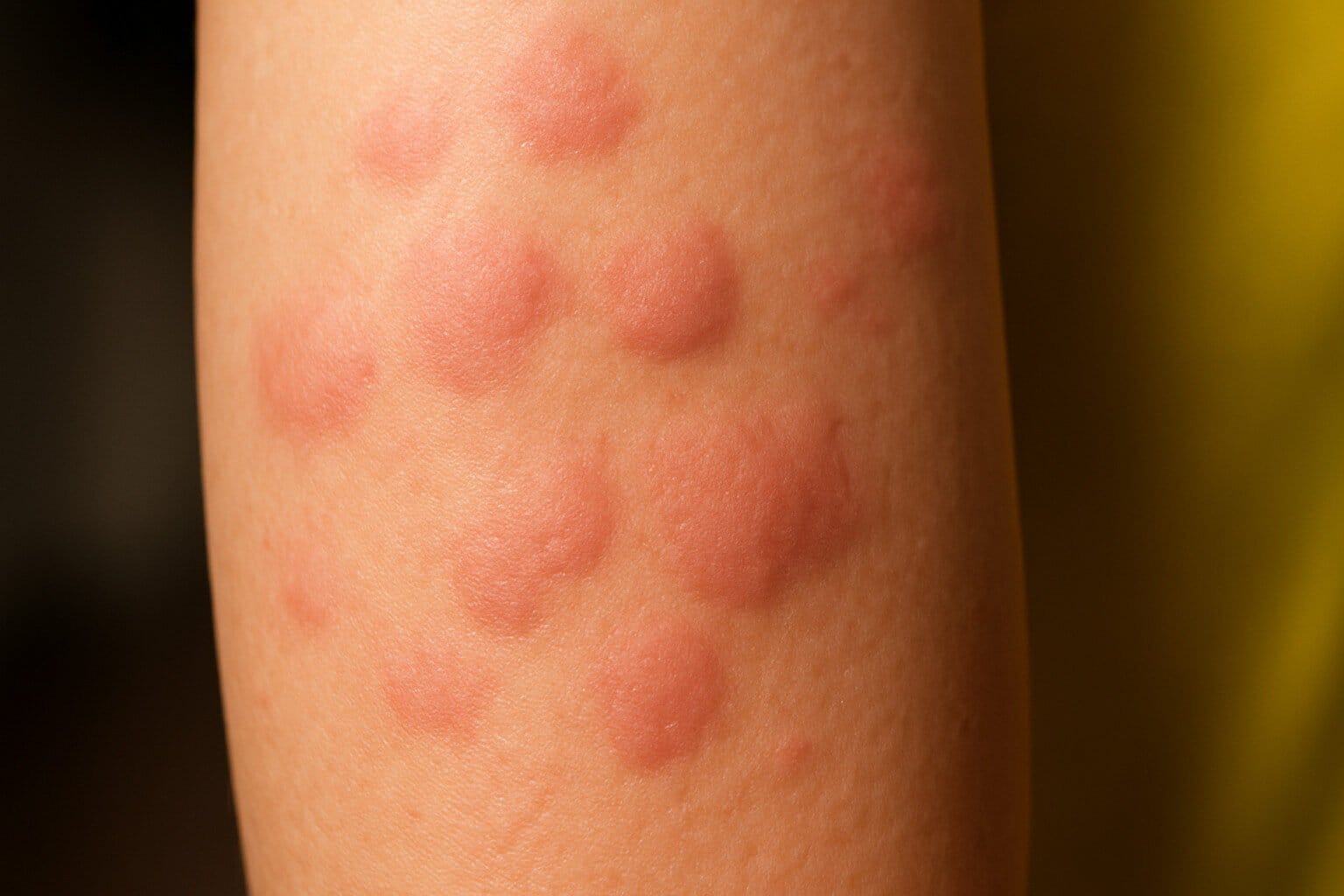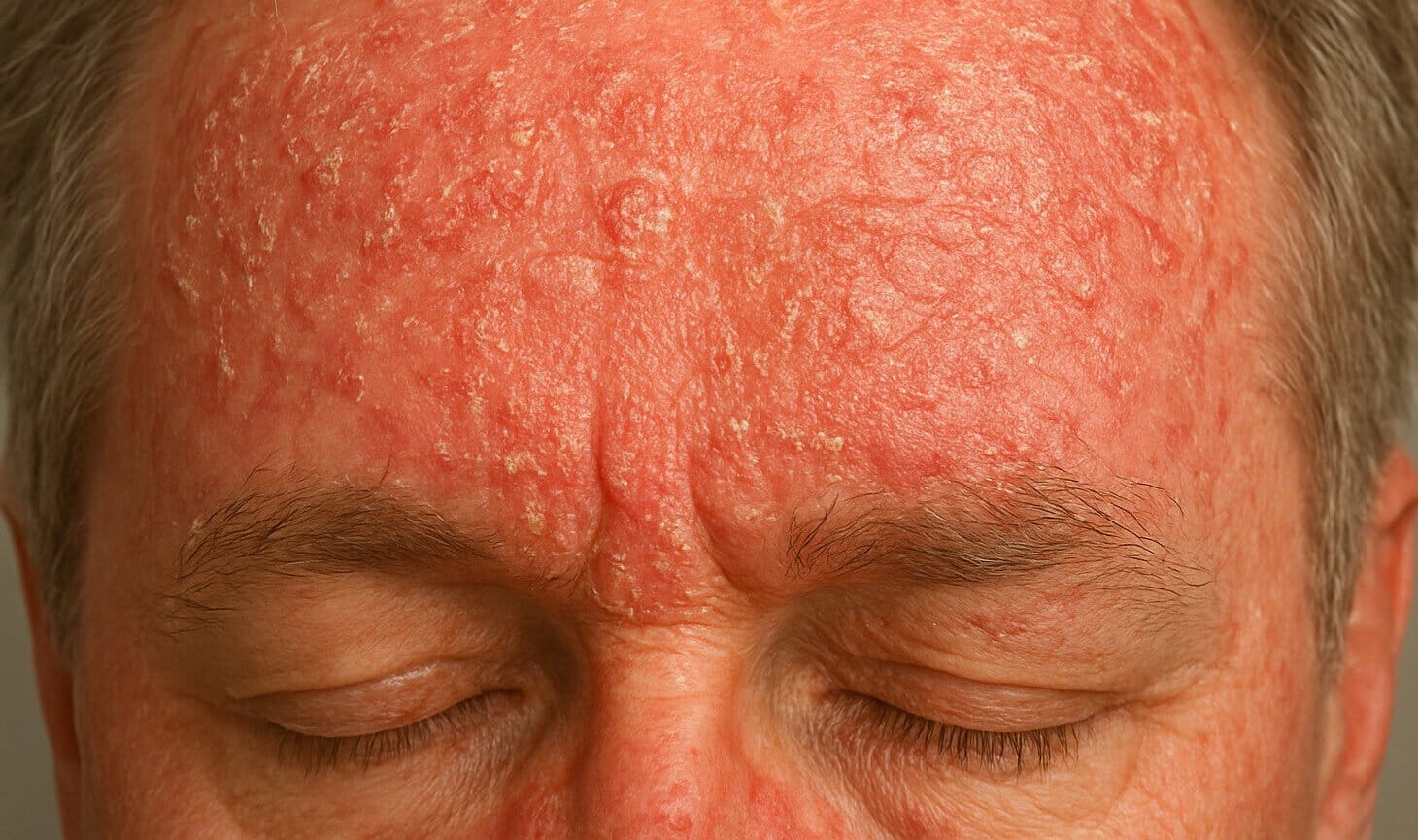Vitiligo: Best Skin Care, Causes & Treatment Guide

Contents
- Overview
- Symptoms and Causes of vitiligo
- Diagnosis and Tests of vitiligo
- Management and Treatment of vitiligo
- Outlook / Prognosis of vitiligo
- Prevention of vitiligo
- Living With vitiligo
- Summary of vitiligo
Overview
What is Vitiligo?
Vitiligo is a skin condition where white patches appear because your skin loses its color, or pigment, in certain areas. These patches can show up on your hands, face, arms, legs, or even your feet, and they might make you feel shy during school events, like a class presentation, a school dance, or picture day. For example, you might notice a white spot on your wrist after playing basketball in the sun. The patches are smooth, not itchy or painful, and can be small like a dime or bigger like a hand. Moreover, vitiligo happens when your skin cells, called melanocytes, stop making melanin, the stuff that gives your skin, hair, and eyes color. It’s not dangerous, but it can affect how you feel about your appearance, especially around friends. However, you can manage it with treatments or coping tricks. Therefore, understanding vitiligo helps you handle it and feel confident in your skin at school or playtime.
How common is Vitiligo?
Vitiligo affects about 1 in 100 people, meaning it’s not super common but not rare either. It happens to kids, teens, adults, and even babies, no matter their skin color. For instance, you might see someone at school, camp, or a family reunion with white patches on their hands or face. It’s more noticeable on darker skin because the patches stand out more, but it affects all skin types equally. Additionally, it often starts before age 20, so kids and teens might notice it during middle school or high school. About 1-2 million people worldwide have vitiligo, and it’s seen in all cultures. Therefore, knowing it’s fairly common can make you feel less alone if you have it and help you talk about it with others.
Who is at risk of Vitiligo?
Anyone can get vitiligo, but some people have a higher chance. If your parents, siblings, or grandparents have vitiligo or autoimmune diseases, like thyroid problems or diabetes, you’re more likely to get it, because it can run in families. For example, if your mom has vitiligo, you might notice patches too. Also, kids with sensitive skin, or those who get sunburns often, like from playing soccer without sunscreen, are at higher risk. Stress, like worrying about a big math test or a school play, can trigger it. Skin injuries, such as cuts from falling off a bike or scrapes during a game, can also start patches. Moreover, some kids get it after illnesses or exposure to chemicals, like in certain soaps. Therefore, knowing your risk helps you watch for early signs and take steps to protect your skin.
What are the main types of Vitiligo?
Vitiligo comes in different types, depending on where and how the white patches appear:
- Generalized Vitiligo: Patches on both sides of the body, like both hands, arms, or knees. For example, you might see patches on both elbows after a summer camp.
- Segmental Vitiligo: Patches on one side or area, like just one leg or arm. It’s more common in kids and often stays in one spot, like a patch on your cheek.
- Focal Vitiligo: A few small patches in one area, like around your eyes or on your neck. For instance, a single spot on your forehead.
- Mucosal Vitiligo: Patches on lips, inside the mouth, or other moist areas, often harder to notice unless on visible spots like lips.
Each type looks different but needs similar care to manage. Therefore, knowing your type helps you choose the right treatment and feel better about your skin.
Symptoms and Causes of Vitiligo
What causes Vitiligo?
Vitiligo happens when your melanocytes, the cells that make melanin, stop working or get destroyed. Melanin gives your skin, hair, and eyes their color, so when it’s gone, white patches form. The main cause is often an autoimmune reaction, where your immune system mistakenly attacks these cells, thinking they’re harmful. For example, if your family has autoimmune diseases, like thyroid issues or type 1 diabetes, you’re more likely to get vitiligo. Additionally, stress from school pressures, like preparing for a science fair or dealing with a new school, can trigger it. Skin injuries, such as sunburns from a day at the beach, cuts from a fall during recess, or scrapes from skateboarding, can start patches in some kids. Moreover, certain chemicals in soaps, lotions, or hair dyes, or even infections like a bad cold, might spark vitiligo. For instance, using a new shampoo with strong chemicals could cause a patch on your scalp. Therefore, understanding these causes helps you spot triggers and protect your skin from new patches.
What are the symptoms of Vitiligo?
The main symptom of vitiligo is white or light patches on your skin where the pigment is gone. These patches are smooth, not scaly, itchy, or painful, and can be small or large, like a coin or a baseball. For example, you might notice a white spot on your hand after a sunny day playing tag or a patch on your face before a school concert. They often appear on sun-exposed areas, like your arms, legs, face, or hands, but can show up anywhere, like your back, knees, or feet. Additionally, some kids see white hair, eyebrows, or eyelashes in patchy areas, or even gray hair on their scalp. Rarely, patches might feel sensitive to sunlight, making them red or sore after a day outside. In some cases, patches spread over time, like from one arm to both. Therefore, spotting these symptoms early helps you manage vitiligo and keep your skin healthy.
Diagnosis and Tests of Vitiligo
How is Vitiligo diagnosed?
Doctors usually diagnose vitiligo by looking at your skin and asking about your health and activities. They check for smooth, white patches, especially in areas that get sun, like your face, hands, or arms, and ask when you first saw them, like after a sports game or a stressful week. Most cases are clear because vitiligo patches look distinct from other rashes. However, to be sure, doctors might use these tests:
- Wood’s Lamp Examination: A special UV light makes patches glow bright white, helping doctors see them clearly, especially on lighter skin.
- Medical and Family History: They ask about your family’s health, like if anyone has vitiligo or autoimmune diseases, and recent events, like a sunburn from a school trip.
- Blood Tests or Biopsy: Rarely, blood tests check for autoimmune conditions, like thyroid issues, or a tiny skin sample confirms it’s vitiligo, not a fungal infection.
These steps help confirm vitiligo and rule out other skin issues. Therefore, a quick doctor visit gives you clear answers to start treatment.
Management and Treatment of Vitiligo
How is Vitiligo managed or treated?
Vitiligo has no cure, but treatments can help bring back some color or make patches less noticeable. Here are some options:
- Topical Corticosteroid Creams: Use creams like hydrocortisone to restore pigment. Apply a thin layer daily to patches, like on your hand, but ask a parent or doctor first to ensure it’s safe. For example, it might help a patch on your arm fade.
- Phototherapy (Light Therapy): Doctors use UV light in a clinic to stimulate pigment cells, often 2-3 times a week. It’s like a special tanning session to bring back color, but it takes months.
- Camouflage Makeup or Skin Dyes: Special makeup matches your skin tone to cover patches. For instance, use it before a school dance to feel confident. Skin dyes can add temporary color too.
- Natural Remedies: Try these with care:
- Aloe vera gel: Apply to patches daily to soothe skin and protect from sun damage.
- Sunscreen (SPF 50): Use daily to prevent burns on patches, especially before outdoor activities like soccer.
- Coconut oil: Apply after washing to keep skin soft and less irritated.
Do these with adult guidance, as some treatments take weeks or months to work. Mild cases might improve slightly, but severe cases need a doctor’s help, like stronger creams or laser therapy. Therefore, treatments can make patches less obvious and boost your confidence.
What are possible complications of Vitiligo?
Vitiligo is harmless but can cause issues if not managed. Patches burn easily in the sun, leading to redness, pain, or blisters. For example, a day at the pool without sunscreen can hurt patches on your arms. Also, vitiligo can make kids feel shy or sad about their looks, especially during school events like gym class or picture day, which might affect confidence. Rarely, it’s linked to autoimmune conditions, like thyroid disease, that need doctor care. Additionally, scratched or injured patches might spread or get irritated. Therefore, protecting your skin and seeking support prevents these problems and keeps you feeling good.
Outlook / Prognosis of Vitiligo
What can be expect with Vitiligo over time?
Vitiligo is different for everyone. Some kids have a few small patches, like a spot on their hand, that stay the same for years without spreading. Others see patches grow, especially after stress, like a big school project, or sunburns from a summer camp. For example, a patch on your knee from a skateboarding fall might get bigger in hot weather. Treatments like corticosteroid creams or phototherapy can bring back some color, but results vary and take months. Segmental vitiligo, common in kids, often stops spreading sooner than generalized vitiligo. However, new patches can appear, especially during stressful times or after skin injuries. Most kids manage it well with care, like sunscreen and makeup, and feel okay about their skin. Therefore, with consistent care, vitiligo can be controlled, letting you enjoy school and activities confidently.
Prevention of Vitiligo
How can Vitiligo be prevented or its risk reduced?
Vitiligo can’t always be prevented, but you can lower the chance of new patches or stop spreading with these tips:
- Apply SPF 50 sunscreen daily, even on cloudy days, to protect patches from sunburn, which can trigger new ones. For example, use it before recess or a soccer game.
- Avoid skin injuries by wearing protective gear, like knee pads for biking or gloves for gardening, to prevent cuts or scrapes that might start patches.
- Manage stress with fun activities, like listening to music, drawing in a sketchbook, or playing board games with friends, to avoid triggering vitiligo.
- Use gentle, fragrance-free soaps and moisturizers, like non-comedogenic lotions, to keep skin healthy without irritation from harsh chemicals.
- Eat healthy foods, like apples, carrots, and whole grains, and drink water to support your immune system and skin health.
Do these daily to reduce risks and keep your skin stable. Therefore, careful habits help control vitiligo and prevent new patches from forming.
Living With Vitiligo
When should you seek medical attention in Vitiligo?
See a doctor if new white patches appear, spread quickly, or burn in the sun, like after a day at the park. For example, if a patch on your face grows before a school talent show, ask a parent for help. Also, seek care if you feel sad, shy, or worried about your skin, as a doctor can suggest treatments or support, like talking to a counselor. If you notice symptoms like tiredness or weight changes, it might mean another health issue, like thyroid problems, linked to vitiligo. If creams or home remedies don’t help after a few months, a doctor can offer stronger options. Therefore, early visits keep vitiligo under control and help you feel better.
What helpful questions should you ask your healthcare provider about Vitiligo?
Asking the right questions helps you manage vitiligo. Try these:
- What type of vitiligo do I have, and which treatments are best for me?
- Can stress, foods, or activities make my patches worse?
- Is sunscreen enough, or do I need other ways to protect my skin?
- Should I get tests for other health issues, like thyroid or diabetes?
- How can I feel more confident about my skin at school or with friends?
- Are there new treatments, like lasers, that might help my patches?
These questions give you clear steps to handle vitiligo. Therefore, talking to your doctor helps you stay in control and feel good about yourself.
Summary of Vitiligo
Vitiligo causes white skin patches when pigment cells stop working, often due to autoimmune issues, stress, sunburns, or injuries. It affects about 1 in 100 people, including kids and adults, and is more noticeable on darker skin. Patches appear on hands, face, or arms, and types include generalized, segmental, focal, and mucosal vitiligo. Doctors diagnose it with a skin check, Wood’s lamp, or blood tests. Treatments like corticosteroid creams, phototherapy, or camouflage makeup help, but there’s no cure. Patches burn easily and might affect confidence. Most cases stabilize with care, but new patches can form. Prevent spreading with sunscreen, injury avoidance, and stress management. See a doctor if patches spread, burn, or make you sad. Therefore, with simple steps, you can manage vitiligo, protect your skin, and feel confident at school or play.
Subscribe to our newsletter!






